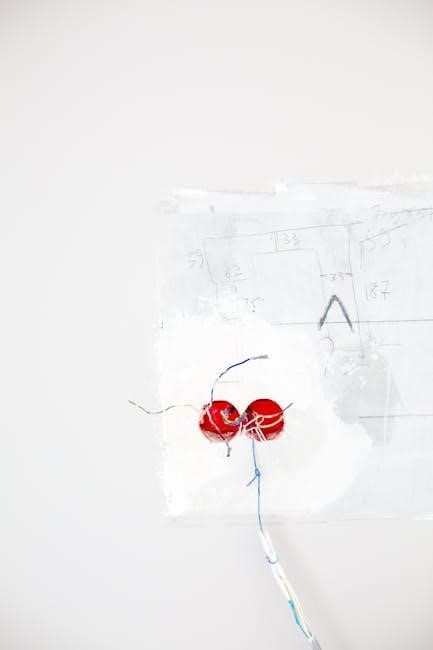A Whirlpool refrigerator wiring diagram is a visual guide illustrating electrical connections and components. It aids in troubleshooting, repairs, and understanding the appliance’s electrical system, ensuring safe and efficient maintenance.
1.1 What is a Wiring Diagram?
A wiring diagram is a detailed schematic illustration that shows the electrical connections and components of a system. It uses symbols, color codes, and labels to represent different parts, such as switches, circuits, and wires. This visual guide helps technicians and DIYers understand how components are interconnected, making it easier to install, diagnose, and repair electrical systems. For a Whirlpool refrigerator, the wiring diagram outlines the flow of electricity through the appliance, highlighting key components like the compressor, thermostat, and control modules. By following the diagram, users can identify where power is distributed and how to trace electrical issues. It is an essential tool for anyone working on appliance repairs, ensuring safety and efficiency in troubleshooting and maintenance.
1.2 Importance of a Wiring Diagram for Appliance Repair
A wiring diagram is crucial for safely and effectively repairing electrical appliances like a Whirlpool refrigerator. It acts as a roadmap, guiding technicians and DIYers through the complex network of wires and components. By understanding the diagram, users can identify where power flows, how circuits are connected, and which components are involved in specific functions. This reduces guesswork, minimizing the risk of electrical shocks, short circuits, or further damage to the appliance. The diagram also helps pinpoint faults quickly, saving time and reducing repair costs. For professionals, it ensures accurate diagnoses and efficient fixes, while for homeowners, it empowers them to address minor issues confidently. Ultimately, a wiring diagram is an indispensable tool for maintaining appliance functionality and safety, making it a cornerstone of any successful repair process.

Understanding the Wiring Diagram
A Whirlpool refrigerator wiring diagram is a visual guide showing electrical connections, symbols, and color codes. It outlines how components like compressors, thermostats, and sensors are interconnected, aiding in diagnostics and repairs.
2.1 Key Components of the Wiring Diagram
A Whirlpool refrigerator wiring diagram includes essential components like terminals, connectors, and wires, which form the electrical backbone. It outlines the compressor, fan motors, thermostat, and sensors. Color-coded wires represent different functions, ensuring clarity. Symbols denote switches, fuses, and relays, while numbered or labeled connectors specify connections. The diagram also highlights safety devices like overload protectors and circuit breakers. Understanding these elements is crucial for diagnosing issues and performing repairs safely and efficiently. Each part is interconnected to ensure proper operation, and the diagram serves as a roadmap for technicians and DIY enthusiasts alike. By identifying these components, users can trace electrical paths and isolate faults effectively. This clear representation of the electrical system simplifies maintenance and reduces the risk of malfunctions.
2.2 Color Coding and Symbolism
Color coding and symbolism in a Whirlpool refrigerator wiring diagram are crucial for understanding electrical connections. Colors like black, red, blue, and yellow represent specific functions: black for hot wires, red for secondary power, blue for neutral, and yellow for ground. Symbols denote components such as capacitors, resistors, and switches, while lines indicate wiring paths. These visual aids simplify complex circuits, ensuring accurate repairs. By referencing the legend, users can identify elements quickly. This standardized system reduces errors and enhances safety, guiding technicians and DIYers through diagnostics and fixes. Proper interpretation of colors and symbols is essential for maintaining the appliance’s functionality and preventing electrical hazards. Consistent use of these codes ensures clarity across all diagrams, making them indispensable tools for troubleshooting and maintenance.
2.3 How to Read the Diagram Effectively
To read a Whirlpool refrigerator wiring diagram effectively, start by identifying the key components and their connections. Locate the legend or key, which explains symbols and color codes. Trace circuits systematically, beginning from the power source and following through to each component. Pay attention to connectors, switches, and sensors, as these often indicate control points. Use the diagram to isolate faulty areas by cross-referencing symptoms with wiring paths; Note ground wires and safety devices, as they are critical for proper function; When troubleshooting, compare the diagram with the actual wiring to identify mismatches; Always reference the legend to avoid confusion with similar symbols. By methodically analyzing the diagram, you can pinpoint issues efficiently and ensure repairs are done correctly. This systematic approach minimizes errors and ensures the appliance operates safely and effectively.
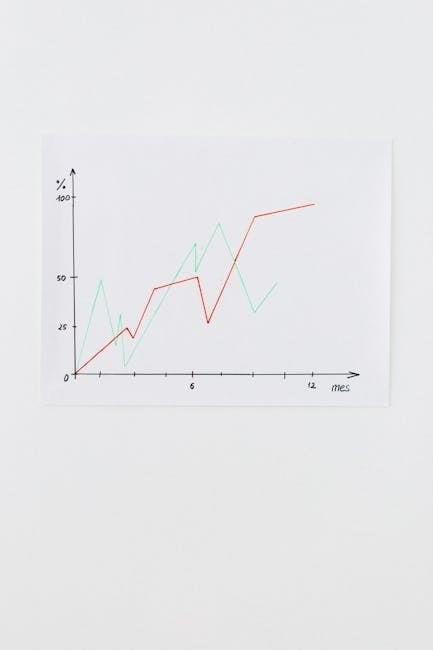
Safety Precautions
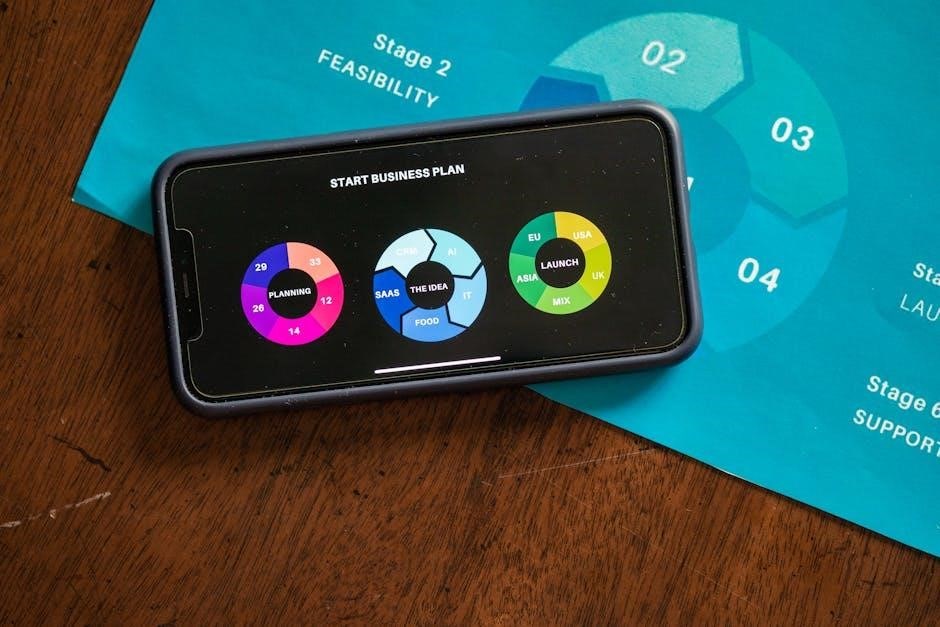
Always disconnect power before working on the refrigerator. Use proper tools and ensure all components are de-energized. Handle electrical parts carefully to avoid shocks or damage. Follow safety guidelines to prevent hazards.
3.1 Essential Safety Tips Before Starting Repair
Before attempting any repairs, ensure the refrigerator is unplugged from the power source to prevent electrical shocks. Always wear insulated gloves and safety goggles for protection. Use a multimeter to verify that all components are de-energized. Never attempt repairs near open flames or sparks, as this could ignite refrigerants. Ensure the area is well-ventilated to avoid inhaling harmful fumes. If you are unsure about any step, consult the user manual or contact a certified technician. Keep children and pets away from the work area. Label all wires and connectors before disconnecting them to ensure proper reassembly. Avoid using damaged tools, as they may cause further electrical issues. Familiarize yourself with the wiring diagram to understand the circuit layout. Remember, safety should always be your top priority when working with electrical appliances.
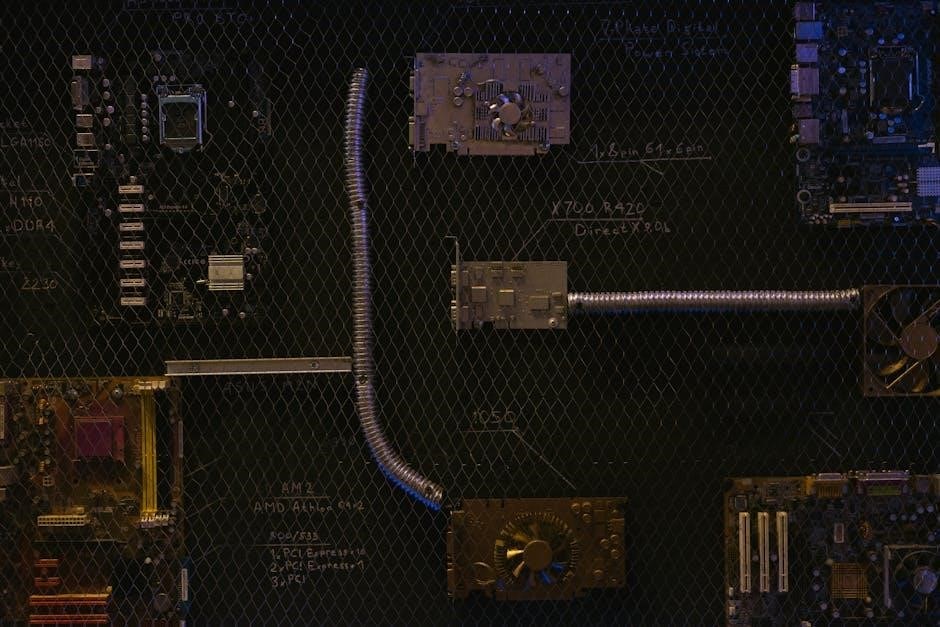
3.2 Best Practices for Handling Electrical Components
When handling electrical components of your Whirlpool refrigerator, always use the correct tools to avoid damage or short circuits. Ensure all power sources are disconnected before starting work. Use a multimeter to verify that no voltage is present in the circuit. Handle wires and connectors gently to prevent wear or breaks. Avoid bending or twisting wires excessively, as this can cause internal damage. Label all disconnected wires and components for easy reassembly. Never force connections; if a connector doesn’t fit easily, check for proper alignment or consult the wiring diagram. Clean connectors and terminals with a soft brush or electrical cleaner to ensure good conductivity. Store loose components in a safe place to prevent misplacement or accidental contact with live circuits. Regularly inspect wires and harnesses for signs of wear or damage. By following these practices, you can ensure safe and effective repairs while maintaining the integrity of your refrigerator’s electrical system.

Retrieving the Wiring Diagram
Locate the wiring diagram in your Whirlpool refrigerator’s user manual or download it from the official Whirlpool website using your model number for accurate and safe repair guidance.
4.1 Locating the Diagram in the User Manual
The wiring diagram for your Whirlpool refrigerator can typically be found in the user manual provided with the appliance. Open the manual and navigate to the technical specifications or appendix section. The diagram is often labeled as a “wiring schematic” or “electrical connections diagram.” Ensure you refer to the correct model number to avoid confusion. If the manual is lost or damaged, check for a digital version on the official Whirlpool website. Use the table of contents or index to quickly locate the diagram. Pay attention to any notes or legends provided alongside the diagram, as they explain symbols and abbreviations. Always verify the model number matches your appliance to ensure accuracy. If the diagram is not found, contact Whirlpool customer support for assistance. This ensures you have the correct information for safe and effective repairs.
4.2 Downloading from Official Whirlpool Website
To download the wiring diagram for your Whirlpool refrigerator, visit the official Whirlpool website. Navigate to the “Support” or “Customer Service” section. Enter your refrigerator’s model number in the search bar to locate the specific manual. Once you access the manual, the wiring diagram is usually found in the technical specifications or appendix section. Ensure you download the PDF version for clarity and offline access. If the diagram is not directly available, check for a link labeled “Wiring Diagram” or “Electrical Connections.” For assistance, contact Whirlpool customer support via chat or phone. Always verify the model number to ensure the correct diagram is downloaded. This method guarantees you have an accurate and official resource for safe and effective repairs. If unsure, refer to the website’s help section for guidance on locating the diagram.
4.3 Contacting Customer Support for Assistance
If you cannot find the wiring diagram through the official website or user manual, contacting Whirlpool’s customer support is a reliable option. Visit the Whirlpool website and navigate to the “Contact Us” section. Provide your refrigerator’s model number, a detailed description of your request, and any additional information that may assist the support team. You can reach out via live chat, email, or phone, depending on the options available. Whirlpool’s customer support team is trained to help users locate specific documentation, including wiring diagrams. Be prepared to confirm your appliance’s model number and serial number for accurate assistance. This method ensures you receive an official and correct wiring diagram tailored to your refrigerator model. If the diagram is not readily available online, customer support can guide you to the appropriate resource or provide it directly. This approach is especially helpful if you’re unsure where to find the diagram or need further clarification. By contacting customer support, you can resolve your query efficiently and safely. Always verify the authenticity of the provided diagram before using it for repairs. This ensures compliance with safety standards and manufacturer recommendations. Customer support is a convenient and reliable way to obtain the necessary documentation for your Whirlpool refrigerator.
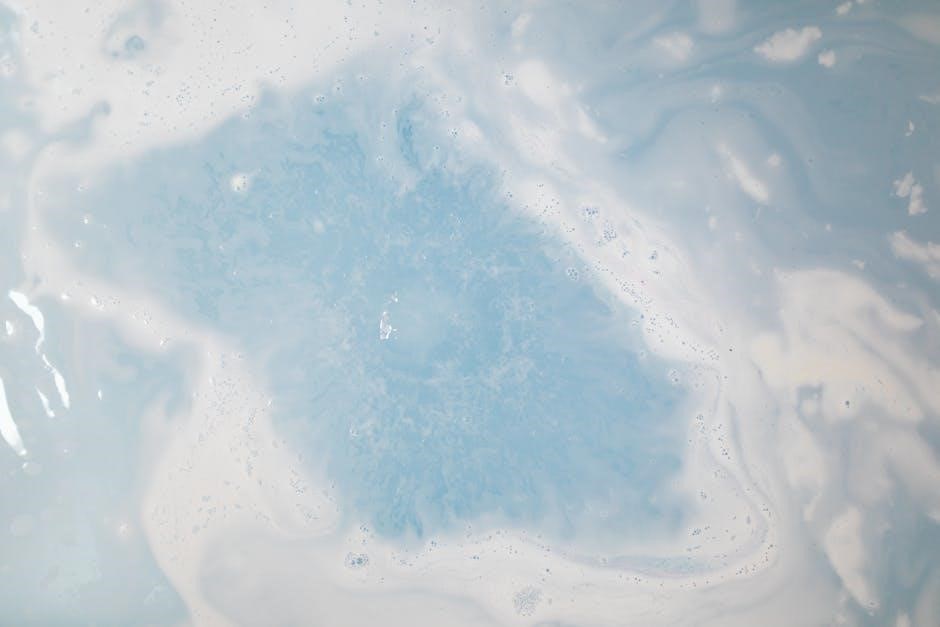
Troubleshooting Common Issues
Use the wiring diagram to identify and diagnose common electrical faults in your Whirlpool refrigerator. Locate faulty components, such as sensors or wiring connections, and refer to the diagram for repair solutions.
5.1 Identifying Faults Using the Wiring Diagram
The wiring diagram is an essential tool for identifying faults in your Whirlpool refrigerator. By referencing the diagram, you can locate specific components such as sensors, relays, and wiring connections. Start by understanding the electrical flow and how components interact. If the refrigerator isn’t cooling, check the compressor and fan motor connections. For ice maker issues, inspect the wiring harness near the freezer door. Use the diagram to trace circuits and identify potential short circuits or disconnections. Pay attention to color-coded wires, as they indicate specific functions. If a component isn’t functioning, refer to the diagram to verify its placement and connections. This method ensures accurate troubleshooting, helping you pinpoint the root cause of the issue efficiently. Always unplug the appliance before attempting repairs to avoid electrical hazards.
5.2 Common Electrical Issues and Solutions
Common electrical issues in Whirlpool refrigerators often stem from faulty wiring, defective components, or loose connections. One frequent problem is a malfunctioning defrost timer, which can cause ice buildup and disrupt cooling. Another issue is a faulty ice maker wiring harness, leading to inconsistent ice production. Additionally, failed relays or blown fuses in the compressor circuit can prevent the refrigerator from cooling altogether. To resolve these issues, refer to the wiring diagram to identify the affected circuit. For example, if the defrost timer isn’t functioning, check its wiring and connections. If the ice maker isn’t working, inspect the wiring harness near the freezer door for damage or disconnections. Replacing faulty components or tightening loose connections often resolves these problems. Always ensure the appliance is unplugged before attempting repairs to avoid electrical shocks or further damage.
5.3 Step-by-Step Troubleshooting Guide
Begin by unplugging the refrigerator to ensure safety. Consult the wiring diagram to identify the circuit related to the issue. Start with the power supply, checking for blown fuses or tripped breakers. If the refrigerator isn’t cooling, inspect the compressor wiring and relays for damage or loose connections. For ice maker issues, verify the wiring harness near the freezer door and ensure the water supply is connected. If the lights aren’t working, trace the wiring to the light switches or sockets. Use a multimeter to test for continuity in suspect wires. Replace any faulty components, such as relays or sensors, and refer to the diagram for proper connections. If issues persist, consult a professional to avoid further complications. Always follow safety guidelines and use the wiring diagram as your primary reference for accurate repairs.

Maintenance and Care
Regularly inspect wiring connections to prevent electrical failures. Clean condenser coils and ensure proper door seals for optimal performance. Refer to the wiring diagram for routine checks and maintenance schedules.
6.1 Regular Checks to Prevent Electrical Failures
Regular inspections of your Whirlpool refrigerator’s electrical system are crucial to prevent failures. Start by ensuring all connections are secure and free from corrosion. Check for frayed wires or damaged insulation, as these can lead to short circuits. Refer to the wiring diagram to locate key components like the compressor, fan motors, and thermostat. Verify that switches and relays operate smoothly. Additionally, clean condenser coils regularly to maintain proper airflow, which helps prevent overheating. Overloaded circuits can cause tripped breakers, so ensure your refrigerator is on a dedicated line. Keep the wiring diagram handy to trace any issues quickly. Finally, schedule annual professional inspections to address hidden problems before they escalate. These checks ensure your refrigerator runs efficiently and safely, minimizing the risk of electrical failures.
6.2 Cleaning and Upkeep Tips
Regular cleaning and upkeep are essential to maintain your Whirlpool refrigerator’s performance and longevity. Start by wiping down shelves, walls, and seals with a mild detergent to remove spills and odors. Clean the condenser coils quarterly, as dust buildup can reduce efficiency and cause overheating. Check door seals for tightness and replace them if they show signs of wear. Defrost the freezer compartment periodically to prevent ice buildup, ensuring proper airflow. Clean the drain hose and evaporator pan to avoid water leaks and mold growth. Additionally, sanitize the interior with a mixture of baking soda and water. Always unplug the refrigerator before cleaning electrical components. Refer to your wiring diagram to avoid accidental damage to sensors or wiring. Regular upkeep ensures optimal function, energy efficiency, and prevents costly repairs.

Additional Resources
Explore recommended tools, technical guides, and further reading for advanced repair. Visit Whirlpool’s official website or contact customer support for detailed wiring diagrams and troubleshooting assistance, ensuring accurate and safe repairs.
7.1 Recommended Tools for Repair
For effective Whirlpool refrigerator repairs, essential tools include a multimeter for voltage checks, wire strippers for handling cables, and screwdrivers for disassembling components. Pliers and wrenches may be needed for specific fixes. Safety gear like insulated gloves and goggles is crucial. Additionally, a thermal camera can detect temperature-related issues, and a circuit tester ensures electrical safety. A set of Torx drivers is often necessary for accessing internal parts. Having these tools ready ensures efficient and safe troubleshooting, allowing you to address issues confidently using the wiring diagram as a guide.
7.2 Further Reading and Technical Guides
For deeper understanding, explore official Whirlpool service manuals and technical bulletins, which provide detailed schematics and repair insights. Third-party repair guides and forums offer practical advice from experienced technicians. Online resources like ApplianceJunkie and RepairClinic share troubleshooting tips and wiring diagram interpretations. Additionally, instructional videos on platforms like YouTube demonstrate hands-on repair techniques. Technical white papers from electrical engineering communities can enhance your knowledge of circuit analysis. These supplementary materials, often available in PDF format, ensure you have comprehensive resources to address complex issues effectively. By consulting these guides, you can gain confidence in diagnosing and resolving electrical problems, ensuring your Whirlpool refrigerator operates efficiently for years to come.

Common Mistakes to Avoid
Avoid DIY repairs without consulting the wiring diagram, as incorrect connections can cause electrical hazards. Never skip safety precautions or overlook worn-out wires, which may lead to system malfunctions or fires.
8.1 Avoiding DIY Repair Errors
DIY repairs can be risky without proper guidance. One common mistake is attempting repairs without disconnecting the power, which can lead to electrical shocks or component damage. Always unplug the refrigerator before starting any work. Another error is ignoring the wiring diagram, which can result in incorrect connections and appliance malfunctions. Misidentifying wires by color or function is another pitfall; refer to the diagram to ensure accuracy. Additionally, using improper tools or bypassing safety features can exacerbate issues. It’s crucial to follow the wiring diagram meticulously and seek professional help if unsure. Remember, electrical components are sensitive, and even minor oversights can lead to costly repairs or safety hazards. Prioritize caution to avoid these common DIY pitfalls and ensure a successful repair process.
8.2 Understanding When to Call a Professional
While DIY repairs can be cost-effective, there are situations where professional expertise is essential. If you encounter complex electrical issues or are unsure about interpreting the wiring diagram, consult a licensed technician. Issues like faulty compressors, damaged circuits, or malfunctioning sensors often require specialized tools and knowledge. Attempting such repairs without proper training can lead to further damage or safety risks. Additionally, if you lack confidence in your ability to follow the wiring diagram accurately, it’s best to seek professional assistance. Improper repairs can void warranties, cause electrical hazards, or result in costly rework. Remember, electrical systems in refrigerators are intricate, and mistakes can have serious consequences. Don’t hesitate to call a professional if you’re unsure, as their expertise ensures safety and optimal appliance performance.
